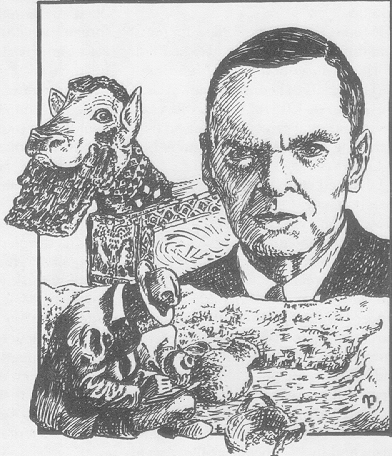Sir Leonard Woolley (1880–1960) -- By: Milton C. Fisher
Journal: Bible and Spade (Second Run)
Volume: BSPADE 06:1 (Winter 1993)
Article: Sir Leonard Woolley (1880–1960)
Author: Milton C. Fisher
BSP 6:1 (Winter 1993) p. 11
Sir Leonard Woolley (1880–1960)
Readers of these biographies see by now that, for all their distinctive personalities and idiosyncracies, certain traits are held in common by true archaeologists. He or she must be moved by curiosity - driven by the urge to discover and learn. But there are other essential qualifications, such as keen observation which leaves no stone unturned (literally!), no object unexamined.
The work is laborious, requiring physical stamina and a mental state of ambition and perseverance. Analytical skill of deduction must combine with intuitive insight gained through both study and experience for interpretation of material remains from ancient sites. Working from the known to the unknown, a controlled, yet active, imagination enables the archaeologist to breathe life into the dry bones of a dead civilization, as Woolley himself has put it. Finally, a literary gift enhances the publicizing of the field work. Detailed, exacting technical reports provide the information and guidance needed by other scholars, and well-written popular treatments serve the general public.

Ever the gentleman, Sir Leonard was a well-dressed digger; his restoration of grave objects was spectacular.
BSP 6:1 (Winter 1993) p. 12
All these attributes well suit the person and work of C. Leonard Woolley, “Mr. Archaeology,” to a generation of enthusiasts. Exhibits of this are his Digging Up the Past (1937, Penguin) and A Forgotten Kingdom (1957, Pelican). The former gives a general introduction and the latter a fascinating description of the detective work involved in his excavation of Atchana and Al Mina in Turkey, which is 2nd Millennium BC Alalakh and its port. In The March of Archaeology, (1958, Alfred A. Knopf) C.W. Ceram says, “Many experts consider Leonard Woolley the most important excavator of the twentieth century” (232). Woolley’s own final memoir, As I Seem to Remember (1962, Praeger) is a collection of delightful and informative anecdotes relating to discoveries, thefts, and recoveries of antiquities.
He is best known, doubtless, for his 12 year directorship of the joint expedition - British Museum and the Museum of the University of Pennsylvania - at Ur of the Chaldees, 1922 ff. But Woolley had a wide-ranging career previous to that, including two years imprisonment by the Turks during World War I.
Educated at Oxford, then appointed assistant curator at the Ashmolean Museum, he first excavated at Roman sites in England and by age 27 was digging in Nubia (Sudan), 1907–1911. The next three years he collaborated with T.E. Lawrence (later heralded ...
Click here to subscribe
